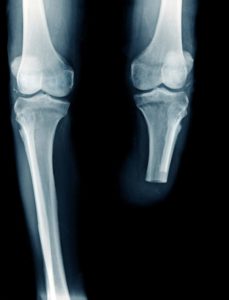
Poverty and Black race were associated with higher rates of lower-leg amputation among people with peripheral arterial disease (PAD) who live in metropolitan areas, according to new research published today in a special issue of the Journal of the American Heart Association (JAHA), an open access journal of the American Heart Association (AHA).
The analysis on PAD-related amputations is one of 16 new research studies highlighting health disparities among people from diverse population groups published in the special spotlight issue of JAHA.
JAHA senior associate editor Pamela Peterson, MD, of the University of Colorado Denver, Denver, Colorado, and associate editor Sula Mazimba, MD, from the University of Virginia Health System, Charlottesville, Virginia, note that while management of cardiovascular disease has reduced death rates over time, there are still “striking disparities” in the U.S. that have widened along racial, ethnic, socioeconomic and geographical lines.
“We hope that this issue of JAHA will reinforce the recent America Heart Association’s presidential advisory statement urging all stakeholders to a committed path towards transforming the conditions of historically marginalized communities, improving the quality of housing and neighborhood environments of these populations, advocating for policies that eliminate inequities in access to economic opportunities, quality education and health care, and enhancing allyship among racial and ethnic groups,” they wrote.
The study, “Geographic and socioeconomic disparities in major lower-extremity amputation rates in metropolitan areas,” by Alexander Fanaroff, MD, of the University of Pennsylvania, Philadelphia, et al, is an analysis of national Medicare claims data to determine ZIP code-level variation in rates of amputation among Medicare beneficiaries.
“Limb amputation can be delayed and or prevented by timely and aggressive treatment. However, lack of access to specialized care may delay PAD diagnosis and limit efforts to save the limbs if it has progressed to the advanced disease stage,” explained Fanaroff.
Fanaroff and colleagues found that ZIP codes with a higher proportion of Black residents had higher amputation rates than ZIP codes with lower proportions of Black residents. In addition, ZIP codes with lower median household income, more residents eligible for Medicaid and worse scores on the Distressed Communities Index scale (a composite marker of socioeconomic status), had higher amputation rates compared to ZIP codes with higher socioeconomic status, even after adjusting for clinical and demographic characteristics.
“Though amputation rates are generally higher in rural areas, this finding shows that the association between lower socioeconomic status, race and amputation rate extends to major metropolitan areas as well as rural regions,” Fanaroff said. “We found that closer proximity to specialized PAD care within metropolitan areas does not ensure access to high quality care. Strategies targeted to communities with high amputation rates are also needed in urban areas to reduce these disparities.”
A recent AHA scientific statement noted sex and ethnic disparities exist in the diagnosis and treatment of the most severe form of PAD, chronic limb-threatening ischemia (CLTI).
Another article in the spotlight issue is a retrospective study of more than 425,000 women (ages 12–49; 59% non-Hispanic white women, 31% non-Hispanic Black women and 10% Hispanic women) in South Carolina who gave birth from 2004–2016 and were followed through 2017. The study, “Incident heart failure within the first and fifth year of delivery among women with hypertensive disorders of pregnancy and pre-pregnancy hypertension in a diverse population,” by Angela M. Malek, PhD, of Medical University of South Carolina, Charleston, et al, found racial and ethnic differences in heart failure rates among women who experience hypertensive disorders during pregnancy as well as among women who experience hypertensive disorders both before and during pregnancy.
Non-Hispanic Black women who had hypertensive disorders of pregnancy with and without pre-pregnancy hypertension had a higher incident heart failure risk within five years of giving birth compared to non-Hispanic white women without hypertension (before or during pregnancy). Among women who had pre-eclampsia or other hypertensive disorders during pregnancy, heart failure event rates were substantially higher in non-Hispanic Black women than non-Hispanic white women: 2.28 compared to 0.96 per 1,000 person-years, respectively. In women who had hypertensive disorders of pregnancy with pre-pregnancy hypertension, heart failure event rates were also substantially higher among non-Hispanic Black women than non-Hispanic white women: 4.3 compared to 1.22 per 1,000 person-years, respectively.
“These racial and ethnic differences are important since we already know non-Hispanic Black women experience higher pregnancy-related deaths than non-Hispanic white women,” said Malek. “Clinical and public health prevention efforts are needed to reduce complications and death rates in women who have hypertensive disorders before or during pregnancy as they are at increased risk of heart failure or dying from heart failure within five years.”
Additional research is needed to further examine racial/ethnic differences in maternal incident heart failure after delivery. The clinical and public health implications of this research could inform changes to clinical practice to reduce modifiable cardiovascular risk factors and screening for adverse maternal outcomes in women identified as high risk, according to the study.
Other research featured in the JAHA spotlight issue on health disparities can be accessed in full here.












